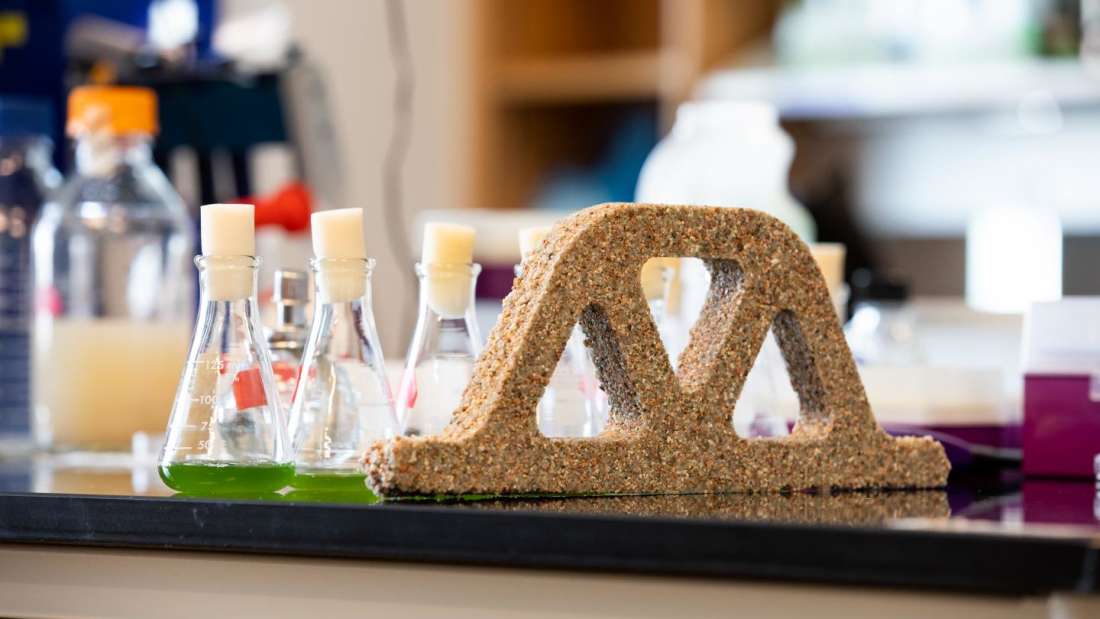
Modern cities are built on concrete, but we pay a terrible price. Not only does its production release about 5 percent of greenhouse gasses, but when concrete fails, the consequences can be devastating. A new form of living concrete made from sand and bacteria can grow as long as nutrients are provided and humidity maintained.
Living organisms have been building calcium carbonate structures for millions of years, as seen in coral reefs or seashells. This capacity has even been used by humans to make grow fillers for cracks in concrete before they can endanger the entire structure. Dr Wil Srubar of the University of Colorado, Boulder, has bigger ideas.
Bacteria in existing living concretes don’t live long enough to grow much. When Srubar searched the scientific literature on living building materials, the reports he found had just 0.1 to 0.4 percent of the microorganisms surviving a month. Different calcifying bacteria might help, but ordinary concretes are alkaline environments, making attempts to patch holes in them lethal to the organisms supposed to do the job.
Instead, Srubar started from scratch, using Synechococcus cyanobacteria, sand, and a hydrogel made from gelatin and nutrients. The Synechococcus use light to photosynthesize the nutrients into CaCO3, which binds with the sand to form a concrete. The gelatin provides a scaffold that allows the material to set, and the bacteria actually remove carbon dioxide from the atmosphere to do it.
Instead of a fraction of 1 percent, Srubar reports 30-day survival rates of 9-14 percent in Matter. When Srubar split a living concrete brick in half and added extra sand, gelatin, and nutrients, the surviving bacteria colonized the new material. In three generations, one brick turned into eight. “That’s exactly what we’re trying to create – something that stays alive,” Srubar said in a statement.
Some challenges remain. One is that the bacteria need quite humid conditions to grow but must dry for the material to gain its maximum strength. Maintaining the right balance in the lab is one thing – on a building site, it is quite another. Moreover, gelatin is produced from animal collagen. Waste from the meat industry provides an ample supply for current needs, but city-building might be another question. Whether vegan gelatin replacements could work as well remains to be seen.
The paper acknowledges living building materials “are not intended to broadly replace cementitious materials,” but argues they could have many uses, particularly for their potential to heal from damage. The fact the bacteria can multiply in situ could save a lot on transportation, providing an advantage for building in hard-to-reach places on Earth, or even one day on Mars.